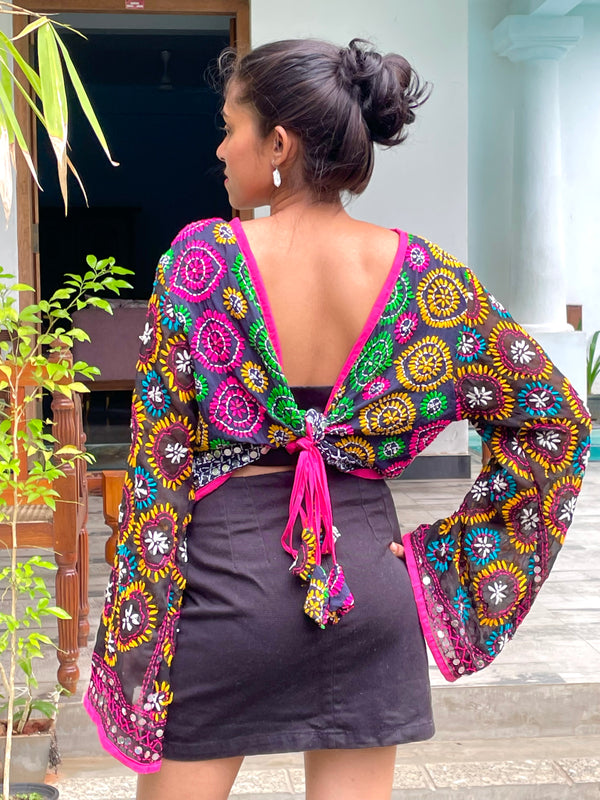Vintage Banjara Textile Dress- The Uma

Designer: Banjara-BoBo GloBal
$ 105.00
Vintage Banjara Textile Dress- The Uma
We met a wonderful man named Ashok in Rajasthan who is a collector, educator, camel artist and supports the Banjara People.
We spent the day with him reading his books, hearing his stories and sifting through his collection of vintage Banjara textiles while he was schooling us on what, where, and how they were made.
Much has been written about the Banjara since they are so fascinating and their work so detailed and ornate.
Banjaras were traditionally suppliers of bullock and salt merchants. The word Banjara is said to be derived from Sanskrit word vana chara (wanderers in jungle). The word Lambani or Lamani is derived from the Sanskrit word lavana (salt), which was the principal product they transported across the country. The Banjara embroidery and tattooing are prized and also form a significant aspect of the Banjara identity. Lambani women specialize in lepo embroidery which involves stitching pieces of mirror, decorative beads and coins onto clothes. The Sandur Lambani Embroidery is a type of textile embroidery unique to the tribe in Sanduru, Bellary district, Karnataka.
Since they were transporters of goods such as salt, grains, firewood and cattle, during the 19th century, the British colonial authorities brought the community under the purview of Criminal Tribes Act of 1871. This curtailed their movement and created great poverty in the tribes. The stigma attached to this continued until 1952 when the Act was abolished by the newly independent India but they remained disenfranchised. Now a lot of Banjara are forced to stay in their one village or close to cities where they participate in the local workforce. We are always striving to learn more and support their work as much as we can. Their vintage pieces should be treasured. We are told to never cut, or destruct their textiles or embroidery and we hope we can also convey this to you.












